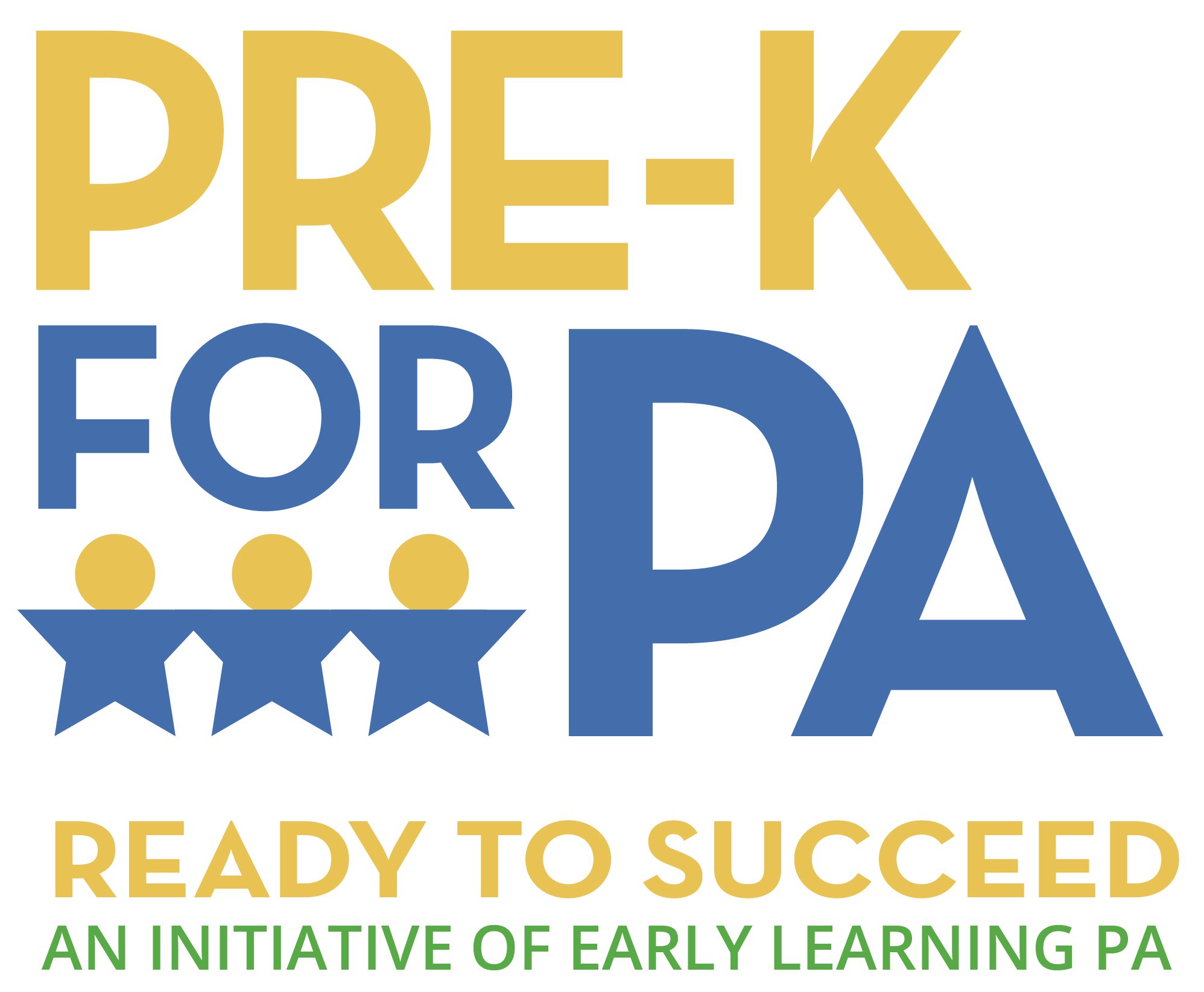FREQUENTLY ASKED QUESTIONS
What is the current state of pre-k in Pennsylvania? Is it any good?
Pennsylvania has made high-quality pre-kindergarten available with impressive results, yet too few 3- and 4-year-olds have access to these crucial programs. Current funding levels for pre-k in Pennsylvania are only enough to help 1 in 6 children access high-quality programs. As a result, many families cannot find or afford high quality pre-k essential to their children’s success.
Quality is a key component in this discussion, which is why the Pre-K for PA campaign is stressing greater access to “high-quality” pre-k programs. Existing high-quality pre-k programs include programs such as Pennsylvania Pre-K Counts and Head Start. Both programs have shown impressive results: the percentage of 4-year-olds with proficient academic and social skills more than tripled from 22 percent to 82 percent after participating in PA Pre-K Counts programs and increased more than six-fold – from 12 to 76 percent – after participating in Head Start Supplemental Assistance Programs in 2012-13.
High-quality pre-k pays off, but it serves far too few children.
So how is “high quality pre-k” being defined by Pre-K for PA?
The campaign believes that a core ingredient of high-quality pre-k programs is degreed teachers with early childhood training. In Pennsylvania, such programs include Pre-K Counts, Head Start, private academic nursery schools, STAR 3 and 4 child care programs and pre-k operated by public schools.
The National Institute for Early Education Research (NIEER) has set the standard for high-quality pre-k programs. NIEER convened a national research advisory panel to review the literature on pre-k and create a 10-point rating scale, which includes teacher qualifications, standards, group size, child-adult ratios, etc. PA Pre-K Counts received a ranking of 7 and Head Start is ranked at 8. Additional NIEER research indicates that one core element of quality is the qualifications of the pre-k teacher. All publicly funded pre-k programs in PA require teachers to have college degrees and early childhood training. Accreditation is another indicator of high-quality. NAEYC, NAFCC and Middle States all provide accreditation for PA pre-k programs based on high-quality standards.
Why does pre-k work?
Is this initiative only intended to benefit public school children?
Why should we spend money on pre-k now, given the current fiscal and economic realities? Is this a wise use of taxpayers’ money?
Pennsylvania taxpayers deserve to have their money used wisely regardless of the state of the economy, and high-quality pre-k is one of the smartest investments we can make in our children, our communities and our economy. If Pennsylvania wants to create a competitive, world-class workforce in the midst of a challenging fiscal environment, investing in high-quality pre-k is one of the smartest ways to accomplish this goal.
Every dollar invested in these programs helps prepare our youngest learners for success in school and in life. Longitudinal research studies indicate that as much as $17 is returned on every $1 invested in high-quality early learning programs. Pre-k saves the commonwealth money in the long term by reducing the need for special education and remedial instruction, increasing the likelihood of graduation and college enrollment, and decreasing dropout rates, crime and incarceration. Economists and business leaders are increasingly convinced that high-quality early education is a sound investment – creating a productive workforce, stimulating the economy, and yielding significant financial returns.
The question is not how can we fund worthwhile programs like these, but rather, how can we afford not to?
Is the goal of the Pre-K for PA campaign to make pre-k available to all children or just certain children based on where they live or their family’s income?
How much will it cost?
Funding for pre-k is already part of Pennsylvania’s annual state budget, but it is not enough to meet the need for every 3- and 4-year-old. In fact, the amount of public funds available for pre-k in Pennsylvania is only enough to help 1 in 6 children access high-quality programs at ages 3 or 4. Later this spring, the campaign will release a white paper detailing program and financing options. More details will be provided at that time on both the fiscal impact to the state and the cost for families.
Pre-k is an important part of the education continuum and saves us money in the long-run. It is important to weigh how much it might cost with what it will save – and the beneficial impact it has on our kids. High-quality pre-k fuels cost savings in the education realm. A Pennsylvania study found school districts investing in pre-k could recoup as much as 78 percent of their pre-k spending in education savings. Providing targeted preschool programs could reduce special education expenditures in the state by at least 8 percent annually ($68 million).
Isn't it a waste to spend public dollars on early education because a study of Head Start shows the benefits are not discernible by 3rd grade anyway?
This Census data may also be useful. The headings labeled “0.5, 1.49, 1.99. 2.99” and on to 4.99 – are income indicators. For example, the number of children in your district ages 0-6 years old in the “0.99” column are the children living in households at the 100% federal poverty level. The “4.99” column are children living in households at 5x the federal poverty threshold. To place this in a real context, families of 4 making $72,500 are right on the 300% poverty threshold, or under the “2.99” column in this spreadsheet. All children under 3 years old in all columns at and below the 300% poverty threshold would qualify for existing Pre-K Counts programs. However, the funding is not adequate to ensure all of these children can access the chance.




